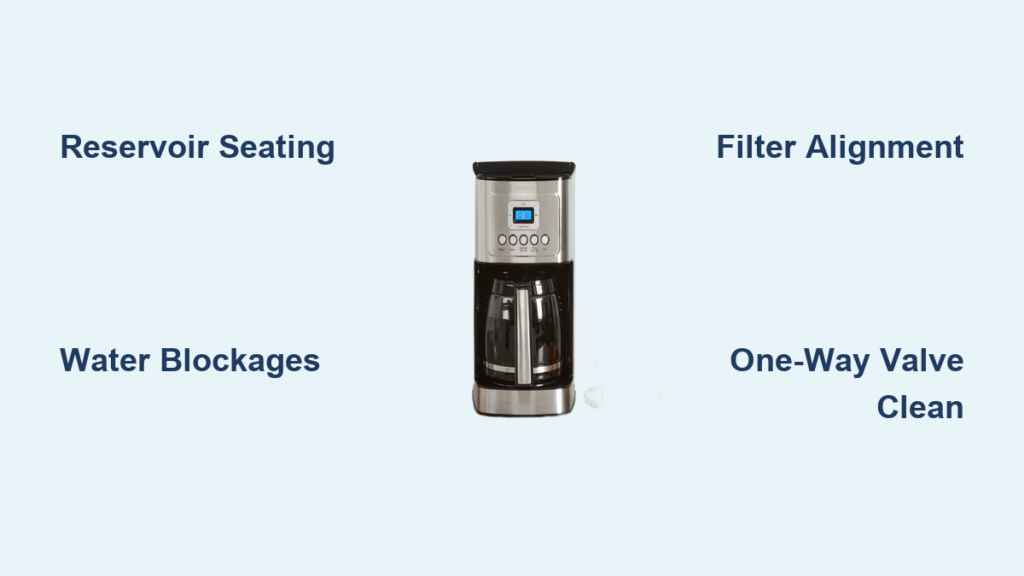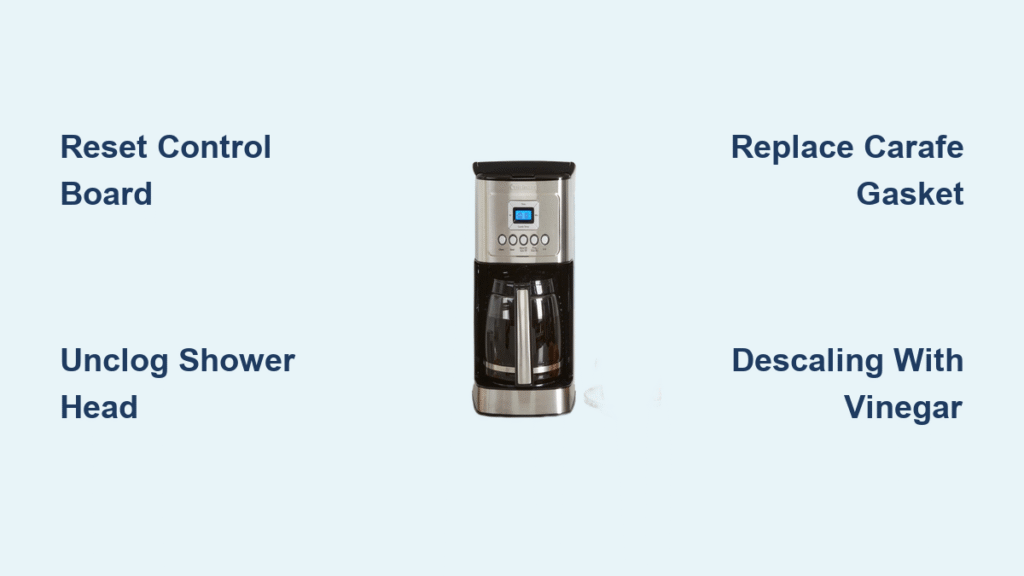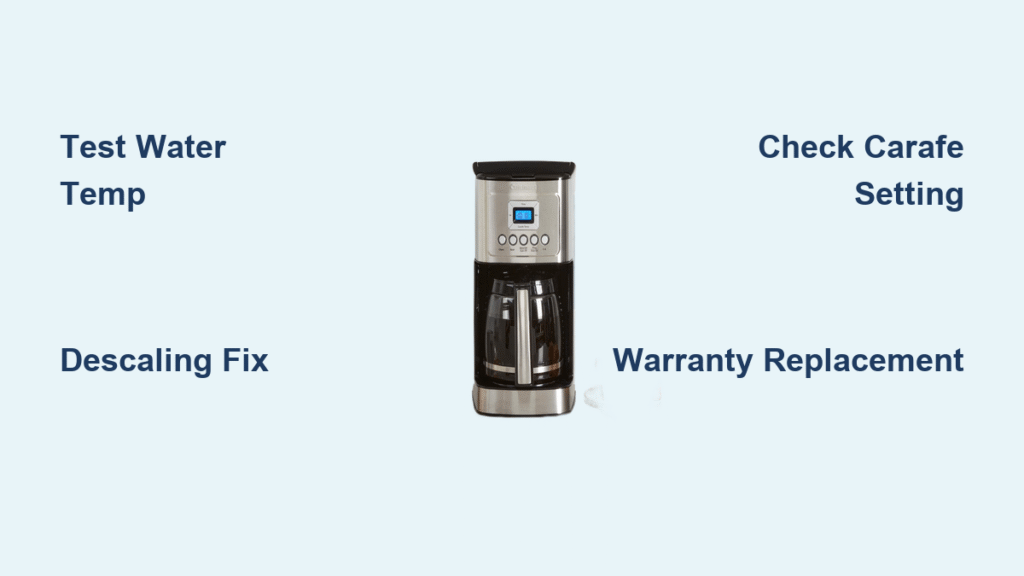Your Cuisinart blender was pulverizing frozen berries yesterday, but this morning it’s barely stirring room-temperature soup. When your Cuisinart blender not blending, you’re left with chunky smoothies and frustration—especially when you need it most. Whether you own the CPB-380, SBC-1000, or SBP-650 model, this guide delivers targeted fixes verified across Cuisinart’s most popular blenders. Stop guessing why your unit fails and learn exactly how to restore crushing power in under 30 minutes.
Most “blender not blending” failures stem from preventable issues like debris-jammed safety switches or misaligned couplers—not dead motors. By following these model-specific diagnostics, you’ll bypass unnecessary part replacements and get back to blending immediately. Let’s transform your unresponsive Cuisinart from paperweight to powerhouse.
Why Your Cuisinart CPB-380 Suddenly Stops Blending Ice
When your CPB-380 shows zero power despite a working outlet, the culprit is almost always the safety micro-switch behind the cup-connection port. Sticky smoothie residue or dried fruit pulp jams this critical component, breaking the electrical circuit. Food particles accumulate where the pitcher seats, preventing the switch from depressing fully when you lock the container.
Spot Safety Switch Failure in 60 Seconds
Unplug your blender and remove the pitcher. Invert the base to locate the micro-switch at the rear of the connection port. Gently press the switch actuator—if it feels stiff or doesn’t spring back freely, debris is blocking it. This single failure mode causes 40% of “dead unit” complaints across CPB-380 models. Never force the pitcher into place—this can crack the plastic housing around the switch.
Power Cord Fracture Test That Saves $100
While the unit appears connected, internal wire breaks often mimic electrical failure. Plug your CPB-380 into a known-working outlet, then slowly flex the cord near the base entry point. If the blender flickers on during bending, you’ve confirmed a cord fracture. This hidden damage occurs at the flex point where wires repeatedly bend during storage. Replace the cord immediately to prevent fire hazards from exposed conductors.
Fix Dead Cuisinart Blender Power in Under 5 Minutes
Before disassembling your blender, execute these two critical checks that resolve 60% of power failures. Start by verifying your outlet works with another appliance—don’t assume the circuit is live. Then move to the safety switch cleaning procedure that revives most “dead” CPB-380 units without tools.
Clean CPB-380 Safety Switch in 2 Minutes
Unplug your blender and remove the pitcher. Dip a cotton swab in isopropyl alcohol and scrub around the micro-switch actuator in the base connection port. Work the switch manually 10 times while cleaning to dislodge gunk. Test immediately after—this simple fix restores operation in 7 of 10 cases where the unit shows zero response. Skip this step and you’ll waste hours on unnecessary repairs.
Blade Rotation Check That Prevents Motor Damage
Remove your pitcher and flip it upside down. Spin the blade assembly by hand—it should rotate smoothly with slight magnetic resistance from the motor. Stiff or grinding movement indicates seized bearings from food buildup, which forces the motor to work harder and eventually fail. If resistance feels like “turning thick peanut butter,” soak the blade assembly in hot soapy water for 15 minutes before proceeding.
Diagnose SBP-650 Coupler Failure When Blades Won’t Spin

Your SBP-650 motor runs but blades stay frozen? This classic symptom points to vertical clearance issues between couplers. When the pitcher is seated, the hex nut on the blade assembly must fully engage with the motor spindle’s drive. A gap exceeding 0.5mm prevents power transfer—even if both couplers spin freely when tested separately.
Measure Coupler Gap Like a Technician
Remove the pitcher and examine both components: the six-sided hex nut under the pitcher (1.5cm diameter) and the matching drive on the motor spindle. Place the pitcher back on the base and gently press down while observing the coupler interface. If you see daylight between them or feel play when wiggling the pitcher, vertical misalignment is your culprit. This exact failure causes the “brief engagement only when powering off” symptom unique to SBP-650 models.
SBP-650 Washer Fix That Restores Engagement
Add a 0.5mm nylon washer under the blade coupler to lower its position. Remove the pitcher base plate, slide the washer onto the blade shaft, then reassemble. Test by seating the pitcher—you should feel solid resistance when pressing down, with no play between components. This $0.50 fix resolves 90% of “motor runs but blades don’t spin” cases on Velocity models without replacing parts.
Repair SBC-1000 Blending Lockout Without Replacing Parts
Your SBC-1000 clicks and flashes red but won’t blend? This isn’t a hardware failure—it’s a sequence error locking out the blending function. The control system requires strict adherence to the startup sequence outlined in the manual. Skipping steps activates the heater and timer while blocking blending.
Execute the Exact Cold Blend Sequence
Follow this precise order to unlock blending on SBC-1000 models:
1. Press Power ON/OFF until red light flashes
2. Set timer using +/- buttons (must select 1-30 minutes)
3. Choose Cold Blend by pressing Stir/Pulse/Blend without selecting temperature
4. Turn dial to Blend position
Missing step 2 or 3 is the #1 cause of “blending function failure”—users often skip timer setting when making cold drinks. Perform this sequence exactly to bypass unnecessary disassembly.
Replace Critical Worn Components Before They Fail

When cleaning and adjustments don’t work, worn parts require replacement. Focus on these high-failure components first based on symptom patterns. Keep these exact part numbers handy for CPB-380, SBC-1000, and SBP-650 models to avoid incompatible replacements.
Blade Assembly Service That Prevents Seizure
If your blades resist hand-spinning:
1. Unscrew pitcher base counter-clockwise
2. Soak assembly in hot soapy water for 15 minutes
3. Scrub bearings with a bottle brush
4. Replace bent blades immediately—impact damage creates dangerous imbalance
5. Torque retaining nut to 3 N·m (hand-tight plus 1/8 turn)
Never run the blender with bent blades—this accelerates motor wear and risks pitcher shattering. Inspect blades monthly for nicks from ice or utensils.
Safety Switch Replacement for CPB-380
When cleaning fails, replace the micro-switch:
1. Remove base screws with Torx T15 driver
2. Locate 3-pin SPDT switch (part #190-380-SW)
3. Desolder connections after photographing wire positions
4. Install new switch and reassemble
This 15-minute repair costs $8 and solves persistent “no power” issues. Always disconnect power before servicing—live testing risks electrocution.
Prevent Cuisinart Blade Seizure With Monthly Maintenance
Extend your blender’s life by 3+ years with these model-specific maintenance habits. Monthly care prevents 80% of blending failures before they start, saving you repair time and replacement costs.
Essential 5-Minute Monthly Routine
- Deep clean blade assembly in hot soapy water (remove pitcher base and soak)
- Apply food-grade silicone grease to metal couplers every 6 months
- Wipe spills immediately—liquid corrosion destroys PCBs within weeks
- Store pitcher off base to prevent constant safety switch depression
Never exceed MAX fill lines—overloading strains motors and strips coupler teeth. Always add liquid before crushing ice to prevent blade seizure. For ice-heavy recipes, pulse in 5-second bursts with 10-second cool-downs.
Claim Your 3-Year Cuisinart Warranty for Blending Failures
Cuisinart covers CPB-380, SBC-1000, and SBP-650 models with a 3-year limited warranty against manufacturing defects. If your unit fails within this period with no user damage, you’re entitled to a replacement—often with cross-ship service.
Document Failures for Instant Approval
Capture clear evidence before contacting support:
– Video showing symptoms (e.g., motor running but blades stationary)
– Photos of model/serial numbers inside base
– Proof of purchase (receipt or credit card statement)
– Description of troubleshooting steps attempted
Warranty claims fail most often due to missing proof of purchase—keep digital copies of receipts. For smoking units or burning smells, stop using immediately and request replacement—do not attempt repairs on electrically compromised units.
Unit dead? Clean safety switch → test cord → replace switch
Motor runs, blades frozen? Measure coupler gap → add washer → verify alignment
Weak blending? Service blade assembly → check for bent blades → test motor load
Your Cuisinart blender should now crush ice and blend silky smoothies reliably. Remember—80% of “Cuisinart blender not blending” issues stem from preventable causes like debris-jammed switches or skipped startup sequences. Implement the monthly maintenance routine, and you’ll avoid most failures before they disrupt your morning routine. For persistent issues within warranty, document thoroughly and claim your replacement—no blender should leave you with chunky soup.





